RZSS species under threat from climate change
17/09/2017 in RZSS
Taking place from 18-22 September, Climate Week 2017 is a campaign helping to raise awareness of, and inspire action on, climate change. As a conservation charity RZSS believes that conservation and protecting the environment go hand in hand Working in over 20 countries around the world, our team of experts work around the clock tackling issues affecting rare and endangered species. From the melting Arctic sea ice affecting the homes of polar bears to Australian bush fires threatening the lively hood of koalas, here are seven species RZSS are involved with that are under threat from climate change.
Musk Ox
IUCN Red List: Least concern
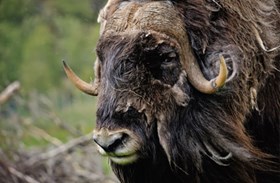
Musk Ox are incredible hardy animals, covered in thick wool that is thought to be many times warmer than regular sheeps wool. They have been known to survive in temperatures as low as minus 40 degrees Celsius.
Despite this resilience, and although currently classified as least concern, climate change is expected to have a detrimental impact on wild populations of this species. Warmer summers in their native range will allow more parasites to survive which can have a detrimental effect on the animals, especially young ones. Milder autumns are already resulting in a layer of ice forming over the ground, rather than powdery snow, making it much harder for the musk ox to find accessible grazing patches during the winter months. Increased snow falls in winter are also a concern as they could make it harder for herds to make their seasonal migrations. Reductions in sea ice can also block migrations to other Arctic islands which compromises the species’ ability to move to better feeding grounds or recolonise islands where they have become extinct.
King Penguins
IUCN Red List: Least concern
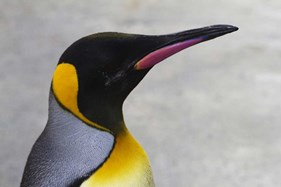 A recent study revealed that sea surface temperatures are an important factor in the feeding patterns of King penguins. The results of this study imply that the projected southwards shift of the Antarctic Polar Front (APF) could have negative consequences for this species as many colonies in the Southern Indian Ocean would have to travel significantly farther to reach their preferred cold water foraging grounds. IPCC climate models suggest that the APF could shift southward by as much as 25-40 km per decade.
A recent study revealed that sea surface temperatures are an important factor in the feeding patterns of King penguins. The results of this study imply that the projected southwards shift of the Antarctic Polar Front (APF) could have negative consequences for this species as many colonies in the Southern Indian Ocean would have to travel significantly farther to reach their preferred cold water foraging grounds. IPCC climate models suggest that the APF could shift southward by as much as 25-40 km per decade.
Giant pandas
IUCN Red List: Vulnerable
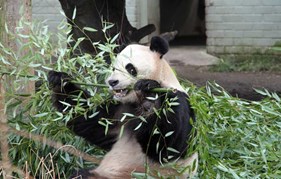 Although the giant panda population is currently increasing, it is predicted that climate change could result in a reduction of over 35% of their bamboo habitat in the next 80 years. Pandas have evolved to live on a diet of mainly bamboo which is readily available and grows all year round. As it has a low nutritional value, pandas eat a lot of it, up to 40kg of bamboo shoots every day. Such a significant reduction in their primary food source, has led to projections of panda population decline.
Although the giant panda population is currently increasing, it is predicted that climate change could result in a reduction of over 35% of their bamboo habitat in the next 80 years. Pandas have evolved to live on a diet of mainly bamboo which is readily available and grows all year round. As it has a low nutritional value, pandas eat a lot of it, up to 40kg of bamboo shoots every day. Such a significant reduction in their primary food source, has led to projections of panda population decline.
Natterjack Toad
IUCN Red List: Least concern (decreasing)
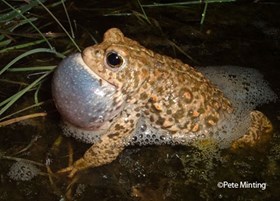 The main threats to this species are loss of specialized habitats (such as heaths and dunes) through the encroachment of scrub and woodland; afforestation, acidification of breeding pools, agriculture, and tourism developments. In some parts of its native range (e.g. in UK and Spain) chytridiomycosis is also a threat. As this species lives in marginal habitats, it is regarded as being vulnerable to climate change, particularly in southern Europe.
The main threats to this species are loss of specialized habitats (such as heaths and dunes) through the encroachment of scrub and woodland; afforestation, acidification of breeding pools, agriculture, and tourism developments. In some parts of its native range (e.g. in UK and Spain) chytridiomycosis is also a threat. As this species lives in marginal habitats, it is regarded as being vulnerable to climate change, particularly in southern Europe.
Koalas
IUCN Red List: Vulnerable
 Koalas face many threats to their eucalyptus habitat across Eastern Australia. These include continued habitat destruction, fragmentation, and modification (which makes them vulnerable to predation by dogs, vehicle strikes, and other factors), bushfires, disease and drought. Climate change is expected to magnify these threats and have severe consequences for this species over the next 20-30 years.
Koalas face many threats to their eucalyptus habitat across Eastern Australia. These include continued habitat destruction, fragmentation, and modification (which makes them vulnerable to predation by dogs, vehicle strikes, and other factors), bushfires, disease and drought. Climate change is expected to magnify these threats and have severe consequences for this species over the next 20-30 years.
Polar Bear
IUCN Red List: Vulnerable
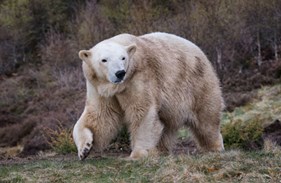 Polar Bears are dependent upon Arctic sea ice for access to their prey. Polar Bears that have continuous access to sea ice (a very small proportion of the current global population) are able to hunt throughout the year. However, in those areas where the sea ice melts completely each summer, Polar Bears are forced to spend months on land, where they rely almost exclusively on their fat reserves until the sea ice returns. In addition to impacting food availability, climate change is also changing denning behaviour, and warmer temperatures increase the threat posed by diseases and parasites. Loss of Arctic sea ice due to climate change is the most serious threat to Polar Bears throughout their range. As the ice season becomes shorter, the bears have less time to lay-down enough body fat to rear young cubs, in the case of females, or survive the summer fasting period.
Polar Bears are dependent upon Arctic sea ice for access to their prey. Polar Bears that have continuous access to sea ice (a very small proportion of the current global population) are able to hunt throughout the year. However, in those areas where the sea ice melts completely each summer, Polar Bears are forced to spend months on land, where they rely almost exclusively on their fat reserves until the sea ice returns. In addition to impacting food availability, climate change is also changing denning behaviour, and warmer temperatures increase the threat posed by diseases and parasites. Loss of Arctic sea ice due to climate change is the most serious threat to Polar Bears throughout their range. As the ice season becomes shorter, the bears have less time to lay-down enough body fat to rear young cubs, in the case of females, or survive the summer fasting period.
Snow leopards
IUCN Red List: Endangered
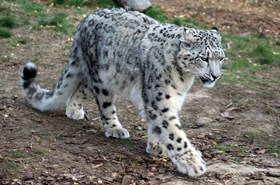 Snow leopards live in the mountainous regions of Central Asia, living between the tree line and snow line. Climate change is causing snow cover to recede and in turn, driving snow leopards further up the mountainside. At higher elevations, vegetation, and more importantly the animals snow leopards prey on, are more scare. Snow leopards are not reliant on snow cover for survival, neither are their wild prey. The main threat for snow leopards lies in the grazing competition between wild and domestic ungulates (the former are also threatened by disease from the latter). As wild species are displaced and become more scarce, snow leopards become more desperate and resort to preying on livestock, increasing instances of human / wildlife conflict.
Snow leopards live in the mountainous regions of Central Asia, living between the tree line and snow line. Climate change is causing snow cover to recede and in turn, driving snow leopards further up the mountainside. At higher elevations, vegetation, and more importantly the animals snow leopards prey on, are more scare. Snow leopards are not reliant on snow cover for survival, neither are their wild prey. The main threat for snow leopards lies in the grazing competition between wild and domestic ungulates (the former are also threatened by disease from the latter). As wild species are displaced and become more scarce, snow leopards become more desperate and resort to preying on livestock, increasing instances of human / wildlife conflict.
Support our work:
Conservation is at the heart of our work. We are active in over 20 countries around the world, tackling issues affecting rare and endangered species and their habitats. We couldn't achieve our charitable aims however without the support of our visitors, members and donors. There are many different ways that you can get involved and help support our work. Click here to find out more ...


























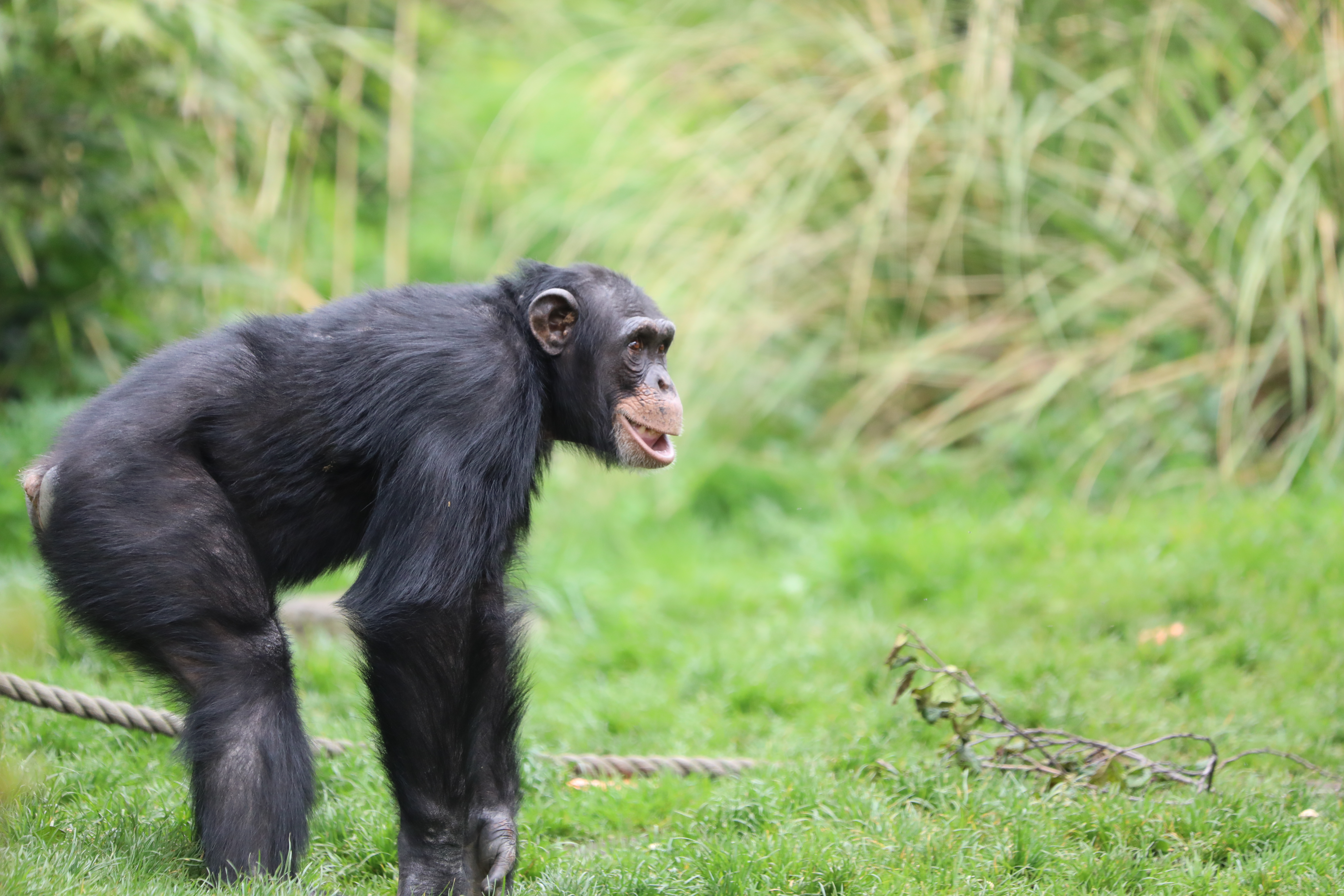
Follow EZ